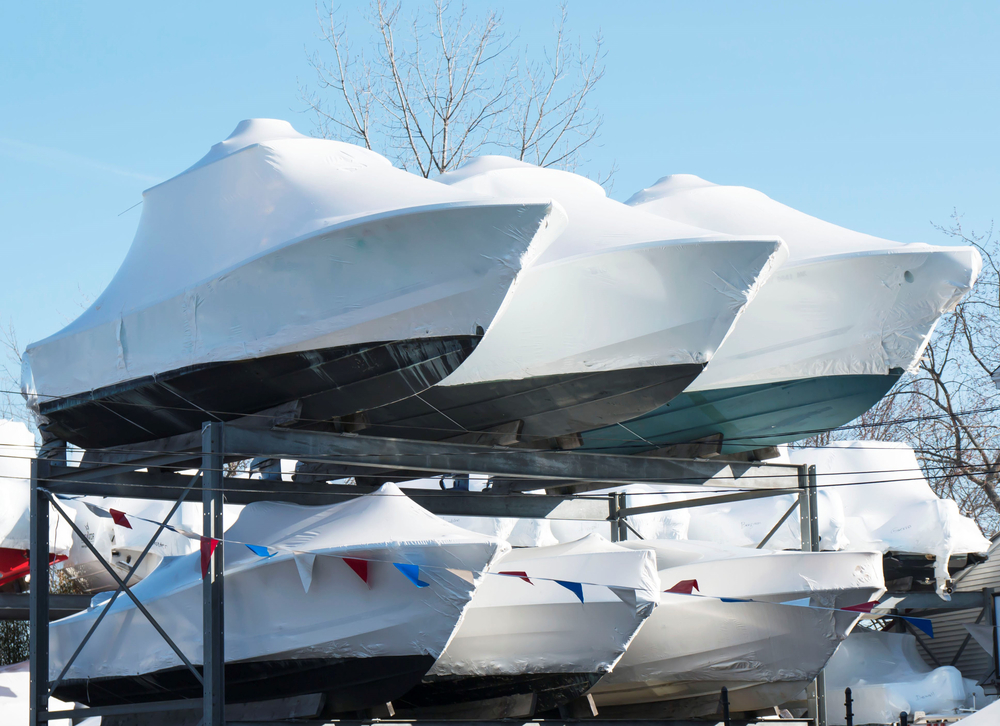How to Winterize Your Boat in Canada

As the boating season ends and winter approaches, it’s time to think about how to prepare your boat for the colder months. Properly winterizing your boat ensures that it remains in good condition and avoids costly damage.
Here’s a guide on how to get your boat ready for storage, what to consider about where to store it, and how much it might cost.
Preparing your boat for winter storage
Clean and wax your boat
Before storing your boat, thoroughly clean the interior and exterior. Take the time to give your boat a fresh wax—this protective layer will help shield it from moisture, UV rays, and other elements during storage. While you’re cleaning, check the hull for blisters, cracks, or other damage that may need repair.
Change the oil and oil filters
Changing the oil and filters before storage is essential to prevent water and contaminants from corroding the engine. Be sure to use marine oil rather than car oil, as it’s formulated for the harsher conditions of a marine environment. After changing the oil, apply fogging oil to the engine to protect it from corrosion and moisture over the winter months.
Flush the cooling system
Salt, dirt, and debris can cause damage if left in your boat’s cooling system. Flush it out with fresh water, then add antifreeze to ensure that no water left in the system will freeze and cause damage.
Winterize the air conditioning system
If your boat has air conditioning, don’t forget to winterize this as well. Consult your owner’s manual to find out the correct procedure for your model.
Charge and disconnect the battery
Fully charge your battery before storage, then disconnect it to prevent it from draining over the winter. Store the battery in a cool, dry place to extend its life.
Prevent Mould
Mould can thrive in enclosed spaces over the winter. Use a mold preventative such as Concordium to spray the inside of the hull and any smooth, hard surfaces. Be sure to read the label carefully to ensure proper use and avoid any damage to your boat's materials.
Cover your boat
Protect your boat from snow, ice, and debris by using a high-quality cover. Winter boat storage shrink wrap is a popular option, as it forms a tight seal and provides excellent protection. If you use a tarp, ensure it is securely fastened and fits snugly around your boat.
Remove all food
No food should be left on board—critters can be surprisingly destructive and persistent. Thoroughly clean out your boat, including all crumbs in hard-to-reach areas like the bilge, to avoid attracting animals.
Fuel stabilizer
Add a fuel stabilizer to your tank to prevent ethanol buildup and keep the fuel fresh.
Consult your engine manual
Every boat is different, so always check your engine manual for specific winterizing instructions. This ensures you're following procedures that are tailored to your engine and other systems.
Inspect the propeller
Remove and inspect the propeller for any damage. Repair or replace it if necessary to avoid surprises in the spring.
Where should I store my boat?
Once your boat is winterized, you’ll need to decide where to store it. You have a few options:
Indoor storage: This offers the best protection from the elements but tends to be more expensive. It’s ideal for those who want maximum security and climate control.
Outdoor storage: You can keep your boat on your property, in a boatyard, or marina with a proper cover. While more affordable, outdoor storage leaves your boat exposed to the weather, so a quality cover is crucial.
Dry stack storage: In some areas, marinas offer dry stack storage, where boats are stored in racks inside a covered facility. This provides protection without the high cost of indoor storage.
How much does it cost to store a boat?
The cost of winter boat storage depends on several factors, such as:
- Size of the boat: Larger boats take up more space and cost more to store.
- Location: Prices vary significantly between regions and facilities. Indoor heated storage will be more expensive than outdoor options.
- Storage type: Indoor, dry stack, and outdoor storage all have different price points.
In Canada, the average cost for outdoor storage is between $30 and $50 per foot of boat length per season, while indoor storage can range from $50 to $100 per foot or more, depending on the amenities offered.
Does boat insurance require my boat to be stored in a certain way?
Some insurance policies have specific requirements for winter storage. If your policy includes a "lay-up period" (a time when the boat isn’t expected to be in use), you may need to store it properly during this time to remain covered. Failing to winterize your boat or store it securely could void certain coverages in your boat insurance policy. Be sure to review your insurance policy or consult with your insurer to clarify any storage requirements.
By taking the time to winterize your boat properly and choosing the right storage method, you’ll protect your investment and ensure it's ready for the next season. Check with your Western Financial Group boat insurance expert to make sure you’re covered while your boat is out of the water for the winter!



.jpg?300x300)